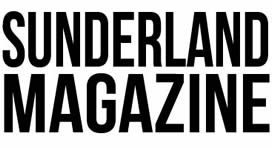In the 2017 general election, all the constituencies in Sunderland have returned Labour MPs with comfortable majorities.
As far as the national picture is concerned, the UK will have a hung parliament. Labour have gained seats and – though the Tories have fallen short of an overall majority – they remain the largest party.
There are three constituencies in Sunderland: Sunderland Central, Washington and Sunderland West, and Houghton and Sunderland South.
In Sunderland Central, Labour’s Julie Elliott won with 25,056 votes and a majority of 9,997, a little smaller than the one she won in 2015. The Conservatives came second with 15,059 votes, UKIP third with 2,209, and the Liberal Democrats fourth with 1,777. The Greens got 705 votes and independent Joseph Young came last with 305 votes.
Julie Elliott has been Sunderland Central’s MP since 2010, when the constituency was created. Before she became an MP, Ms Elliott – who grew up in Whitburn – served as a governor at a number of schools across Sunderland and South Tyneside.
Ms Elliott said, “I campaigned on my record as a strong local MP, on behalf of the people who live here, fighting their corner and that’s how I will continue to serve.”
“Sunderland needs a Labour government and so does Britain.”
In Washington and Sunderland West, Labour’s Sharon Hodgson won 24,639 votes and a majority of 12,940, slightly smaller than the one she won in 2015. The Conservatives came in second with 11,699 votes, UKIP were third with 2,761, the Liberal Democrats fourth with 961 and the Greens fifth with 514.
Sharon Hodgson has held the seat since its creation in 2010. Before becoming an MP, she taught in a number of North East schools and worked as an administrator for Northern Rock.
Ms Hodgson said, “I want to thank the amazing people of Washington and Sunderland West. They have put their faith in me.”
“On my return to Parliament, I will continue to be a strong, passionate and dedicated voice that ensures the views of Washington and Sunderland are heard.”
“This election was about a choice between the privileged few under Theresa May or putting the interests of the many first under Jeremy Corbyn.”
In Houghton and Sunderland South, Labour’s Bridget Phillipson won with 24,665 votes and a majority of 12,341. Though Ms Phillipson won more votes in total than in 2015, her majority was a little smaller than last time.
The Conservatives came second with 12,324 votes, UKIP third with 2,379, the Liberal Democrats fourth with 908, and the Greens fifth with 725. Independent Mick Watson finished last with 479 votes.
Bridget Phillipson has served as a Labour whip and been on the influential cross-party Home Affairs Committee. Born and raised in Washington, Ms Phillipson studied at Oxford University and managed the Wearside Women in Need refuge. She has been the MP for Houghton and Sunderland South since 2010.
Ms Phillipson said, “The Labour Party was founded to secure political power for communities like ours. We still believe the government can be a force for good.”
It’s official: #HungParliament for UK. No party can win a majorityhttps://t.co/jpy6wsvCIX#GE2017 #BBCelection pic.twitter.com/PkhA8es9df
— BBC Breaking News (@BBCBreaking) June 9, 2017
Though the red fortresses of Sunderland’s constituencies would have needed a massive swing away from Labour to fall to the Tories, the Conservatives were hoping to capture a number of North East seats.
But the only one they took was Middlesbrough South and Cleveland East. Other targets like Hartlepool, Darlington and North West Durham stayed red.
In regard to the national picture, the Tories did surprisingly poorly whilst Labour confounded expectations.
After Theresa May announced the snap election, the polls had the Tories up to 25 points in the lead. Labour, however, managed to claw much of that back. Polls in the later stages of the contest ranged from Labour being 1 point to 12 points behind.
Labour’s fightback has been credited to an ambitious, fully costed manifesto that contained a number of popular policies and to the fact that Jeremy Corbyn’s campaign performance was much better than many people expected.
The Tories, on the other hand, were criticised for having an uncosted manifesto and for unpopular policies such as the dementia tax. Theresa May’s campaign performance was also seen as lacklustre, with the Prime Minister facing criticism for ducking TV debates and for repeating soundbites rather than properly answering questions from journalists and the public.
It remains to be seen if Theresa May will stay on as Prime Minister. There is talk of a challenge to May from Boris Johnson. Former Tory MP George Osbourne has described the Conservative manifesto as “one of the worst manifestos in history” and said the exit polls indicating a Labour fightback were “catastrophic.”
But other Tories seem to want May to continue and dread the instability that will be caused by a leadership challenge.
At the time of writing, Labour had gained 40.2 % of the vote and the Tories 42.36%, with Labour having won 260 seats (up 31) and the Tories 312 (down 13). The Liberal Democrats have won 12 seats (up 4) and the SNP 35 (down 19).
The most likely government to emerge from all this will be a Conservative administration propped up by Northern Ireland’s Democratic Unionist Party. This could be an interesting pairing as – though the DUP are socially conservative and keen supporters of Brexit – the party has a history of voting against most of the Tories’ austerity legislation.
In addition to the general election, another important contest was fought out in the North East last night. Sunderland and Newcastle have long competed to see who can declare the first result of the election.
Newcastle was the first mainland UK area to declare the result of the Brexit vote while a Sunderland constituency has been the first to declare in the last five general elections.
Tonight’s first result was declared by Newcastle Central. The seat declared at 11.00 pm, just an hour after the polls had closed. The second constituency to declare was Houghton and Sunderland South just seven minutes later.
Chi Onwurah, the Labour MP for Newcastle Central, said, “I would be lying if I said I was not very proud to be the first MP elected.”
(Featured image courtesy of Tiocfaidh ar la 1916, from Flickr Creative Commons)
















